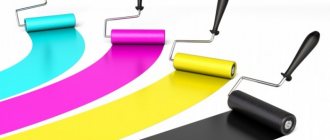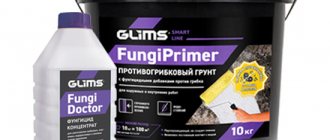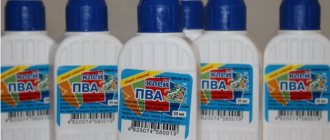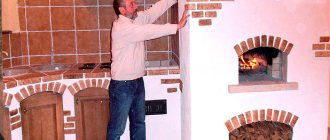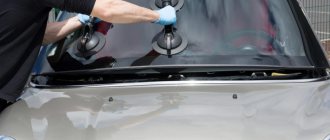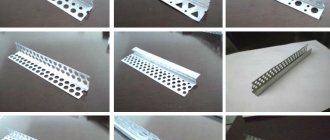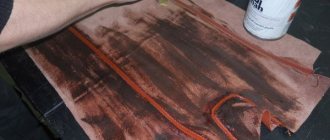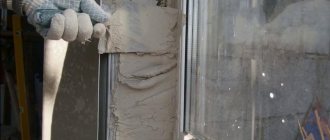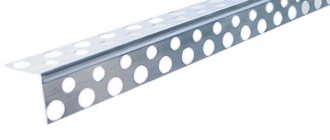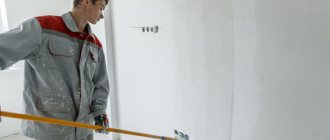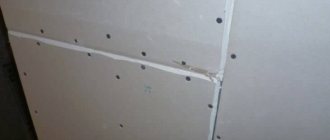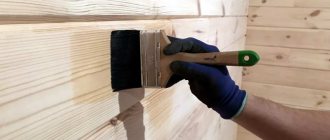During the repair process, it is often difficult to choose a suitable primer, especially if the surface has different materials in structure. It is necessary that the primer is universal, can protect the walls from the negative influence of the external environment and has minimal consumption. In addition, the finish must be firmly on the surface. The acrylic primer meets all requirements.
General information
Depending on the type of primer, they may differ from each other, this provides certain properties:
- Universal compositions provide water resistance to the surface and good adhesion to the subsequently applied finishing.
- An adhesion primer improves adhesion by increasing the adhesion of the substrate to the finish coat.
- Impregnating compositions are used for absorbent surfaces.
- Deep-penetrating primers (penetrate up to 12 cm) level and strengthen walls.
The form of manufacture is also different. Ready-made formulations only need to be mixed thoroughly before use. But mixtures in the form of concentrates must be diluted before use, taking into account the attached instructions.
The primer in the can must be shaken well before use. Cylinders have the lowest consumption, but their disadvantage is that the containers are small in volume.
Rules for applying acrylic primer
Body repair work is carried out in a clean garage, where there is no excessive dust, good light is installed and ventilation is possible. The car needs to be washed, rust sanded off and treated with anti-silicone.
To achieve the desired result, you need to follow several recommendations from experts:
- the surface is pre-degreased and treated with sandpaper;
- acrylic primer for cars in cans can be applied without the use of additional products. For compositions in cans you will need a spray gun with a nozzle from 1.4 to 1.6 mm;
- large irregularities are first filled with liquid putty;
- if the “wet on wet” method is used, materials from the same brand are selected;
- Matting of the soil is carried out after complete drying.
It is necessary to carefully consider the information provided by the manufacturer regarding the correct dilution of the product if working with two-component formulations. Too little or too much hardener will cause changes in drying times.
Purpose and application
The primer is applied to all types of surfaces. This is possible wood, OSB, drywall, metal, concrete blocks. At the same time, the soil not only levels the blocks, but also increases adhesion to various decorative finishes.
Acrylic compositions are also characterized by high hiding power, that is, they contribute to the appearance of a thin protective film layer that has high strength.
Acrylic-based primer is completely safe, which is why it is often used for interior work. They also produce two-component acrylic primer based on organic solvents, which is characterized by high toxicity, but its main purpose is outdoor work.
Luxorit Beton-Contact
Luxorite Beton-Contact is an adhesive primer with quartz filler. It is indispensable where you need to work with smooth, dense, non-moisture-absorbing substrates on which paints and plaster do not adhere.
The secret of its action lies in its composition. This aqueous solution contains acrylic resin, quartz sand, antiseptic, plasticizer and complex additives. The result is a durable, rough coating that adheres well to all types of plaster and other finishing coatings.
Concrete contact is used for interior work on:
- concrete floors, walls, ceilings;
- massive floors;
- monolithic concrete with sound-absorbing film;
- polished concrete blocks;
- old facing ceramic tiles;
- other types of coatings.
Composition and technical characteristics
Depending on the purpose, soils differ in their composition. But there are a number of basic components used in all types of mixtures.
The acrylic primer contains aqueous dispersion, dyes, softening agents, fillers, and catalysts. Also, sometimes specific substances are used, taking into account a specific purpose. Initially, no coloring substances are added to the composition - the manufacturer can produce white or gray primer. But if there is a need, then the color of the required shade can be added to the gray composition.
Depending on the purpose of the mixture, the percentage of a certain substance may vary. The density and drying time depend on this.
Compositions of solutions made on the basis of organic solvents are suitable for outdoor work, since they can withstand any atmospheric conditions well. Mixtures where water is used as a solvent are used for interior work.
Consumption per 1 m2
Consumption is influenced by many factors. If the surface has a porous structure, more soil will be required. If you need to work with such walls, then use a deep penetration primer.
The approximate consumption per 1 m2 is about 120-250 ml. The manufacturer always indicates in the instructions the number of layers required for a particular surface.
How to reduce water absorption of gypsum
Hydrophobization is a simple and sure way to improve the characteristics of stucco. For this product:
1. Treated with special substances.
2. Hydrophobizing additives are introduced into the gypsum dough at the production stage.
Water repellents protect gypsum corners, baseboards and columns not only from moisture. They prevent the formation of mold and mildew, and efflorescence.
Apply with a spray or brush to a previously cleaned surface and dry fairly quickly. Despite the reduction in water absorption, the strength of the finished products remains unchanged. Increases resistance to low temperatures.
Tips and recommendations for use
Even a novice master can handle applying primer. To work, you will need a brush, roller or paint sprayer. The process is similar to regular dyeing. But during work it is necessary to take into account certain features:
- When processing one surface, you need to stop using different types of soil on it.
- You need to choose a primer that complies with GOST.
- Areas with a relief surface are recommended to be treated with a brush.
- For walls with a flat surface, it is best to choose a roller. This will save material and create a more uniform layer.
- When working with a paint sprayer, you will need a construction mask. This will protect your eyes and respiratory organs.
Important: For best performance, the primer composition is best applied in two layers.
Optimist
The penetration depth of the primer is 5 mm. It belongs to the fourth safety class in terms of fire resistance, the spontaneous combustion temperature exceeds +450C. The solution is odorless and dries in 2-4 hours.
Withstands temperature changes from -45 to +60C, and up to five freezing cycles within a month, but not exceeding minus 25 degrees.
The penetrating emulsion fills voids upon application, creating a flexible coating that is resistant to deformation, chemicals and static.
Optimist
This primer perfectly protects metal from rust, and makes wood materials visually more structured and rich, since the composition of the solution is completely transparent. The emulsion is packaged in containers of various capacities, which is convenient when calculating quantities.
It is easy to apply: you will need a container, a roller, or you can use a wide flat brush; the solution can also be applied using a spray gun.
The primer may require reapplication on highly absorbent surfaces. The two layers will be about 40 microns thick.
Work is performed in a certain temperature range from 5 to 35 degrees Celsius. After it has completely dried, you can apply any paint and varnish products on top of the emulsion, glue wallpaper, or lay ceramic tiles. For this, tile adhesives with different characteristics are used.
Types of primers with acrylic
Acrylic-based primer can have different properties, taking into account certain tasks and surface properties. For each specific job there is its own type of acrylic mixtures.
By purpose
Depending on the technical characteristics and purpose, the acrylic primer can be:
- Deep penetration. This acrylate primer glues small particles together and fills the porous surface, helping to level it.
- Deep is an improved composition of deep penetration soil. Can penetrate surfaces up to 15 cm, used to treat walls made of old concrete.
- Impregnating. Used to smooth rough walls.
- Adhesive. Improves the strength of the finish, but has weak absorbent properties.
- Universal, having fastening, adhesive and impregnating characteristics.
- The polyacrylic mixture is characterized by high protective and strength properties, but it is also the most expensive and has increased consumption.
By type of solvent
Depending on the type of solvent, the primer can be of the following types:
- Water soluble. It is made on a water or latex basis. Dries quickly, practically odorless, excellent for both interior walls made of plaster, OSB, brick, and for exterior use.
- Organosoluble. It is made on the basis of organic solvents. Improves protection from the negative effects of the external environment, prevents the appearance of fungus.
Depending on the surface to be coated
Strengthening primer is also manufactured taking into account the characteristics of specific surfaces:
- Adhesive. Used for concrete surfaces (concrete blocks, ceilings, floors) with poor moisture-absorbing properties. Used for plastering or painting.
- Deep. Used for treating plasterboard walls or other moisture-absorbing surfaces. This makes drywall much stronger and improves its moisture-repellent properties. Treat before painting or wallpapering.
- For wood and metal. For wood, a one- or two-component composition is used, taking into account the characteristics of the room. For metal, as a rule, a water-based primer with additives is used to protect against corrosion. The compositions are used for painting or can be the final stage of repair.
- Water-dispersed. One-component primers are suitable for treating wood and OSB surfaces. You can add a certain color to the composition for a tint, which will improve the quality of further painting or highlight the texture of wood coated with colorless varnish.
Attention: To check the properties of the acrylic primer yourself, you need to apply the composition to the surface once with a roller. If a varnish film appears, then this is a strengthening primer. Deep penetration soil leaves almost no marks on the wall.
What it is
Small collisions in the parking lot, an accidental curb, or a branch falling on the hood during strong winds and rain can cause damage to the paintwork. You can go to the service, but often such services are not suitable for the price. To fix the defect yourself, you will need to buy not only car enamel. The car needs to be prepared for the procedure.
Manufacturers offer various types of compounds designed for plastic, concrete or metal surfaces. Penetration qualities are important, determining how deeply the product penetrates. Acrylic primer for cars in cans allows you to solve several problems:
- form a layer between the metal and the paintwork to improve adhesion;
- level the surface before painting;
- protect the body from the appearance of corrosion spots;
- fill micropores, scratches and roughness.
The final coating will be smooth and resistant to adverse conditions, temperature changes, sunlight and humidity.
Review of popular manufacturers
When purchasing soil from an unknown manufacturer, there is always a risk of buying low-quality products, while global manufacturers constantly monitor the quality of their goods. List of the most popular manufacturers:
- "Prospectors". The mixture has the ability to fill pores and small cracks. The use of quartz sand in the composition improves adhesive properties. It is permissible to use a primer for external and internal work.
- "Optimist". Acrylic primer is suitable for interior and exterior work. This is a mixture of latex with modifying additives and antiseptics. The mixture can be used to treat surfaces that are susceptible to the negative effects of moisture.
- "Tex." A universal mixture that penetrates surfaces up to 7 mm. Due to this ability of acrylic primer, it is used for facades and interior work. Can be used in rooms with high humidity.
- "Knauf". It is a leading global manufacturer in the construction market. Among the large assortment of primers from this company, one can note the polymer composition “Betonkontakt”.
A correctly selected primer, taking into account the required surface characteristics, will ensure the subsequent quality of the finish. The wallpaper will lay perfectly flat on a properly chosen primer, and the painted floor will not crack for a long time. The plasterboard wall will be protected from moisture, and the floor will enjoy a smooth surface for a long time.
Let's estimate prices
In the building materials market, prices for acrylic primers vary widely. The price is determined by:
- functional specificity of the soil itself;
- conditions dictated by the manufacturer and supplier;
- the place where the production is located;
- brand rating;
- filling with modifying additives (the more there are, the higher the price).
That is why it is important to know the level of quality that will be necessary and sufficient for each specific case - in order to make a rational choice of primer material.
Sometimes it is still possible to make a direct calculation of the feasibility of using a primer. For example, you need to apply concrete contact to a surface that is not completely wetted. Will there be significant savings from pre-treatment with impregnating primer of the same brand? Let's summarize prices and consumption rates in Table 2.
Table 2. Acrylic primer: consumption and price.
table 2
The table shows that in the case of using a preliminary layer of deep impregnation, we have a gain in terms of the norm by 2-3 times and for deep penetration soil the price is 1.5-3 times less.
In a similar way, you can estimate the economic feasibility of deep impregnation before applying any other primer. Acrylic primer, the price of which is the most favorable, is universal without any special additives. Therefore, if the surfaces to be finished do not have any particular defects and will not bear excessive operational loads, it is better to buy it.
GOODHIM GU universal acrylic primer with strong antiseptic additives, high latex content, environmentally friendly and safe for health, suitable for strengthening foundations in a wide variety of rooms, including those with high humidity. Able to bind dust, reducing water absorption, and adhere to non-absorbent substrates. It is very good from an economic point of view - the price is 153 rubles. for 5 liters.
